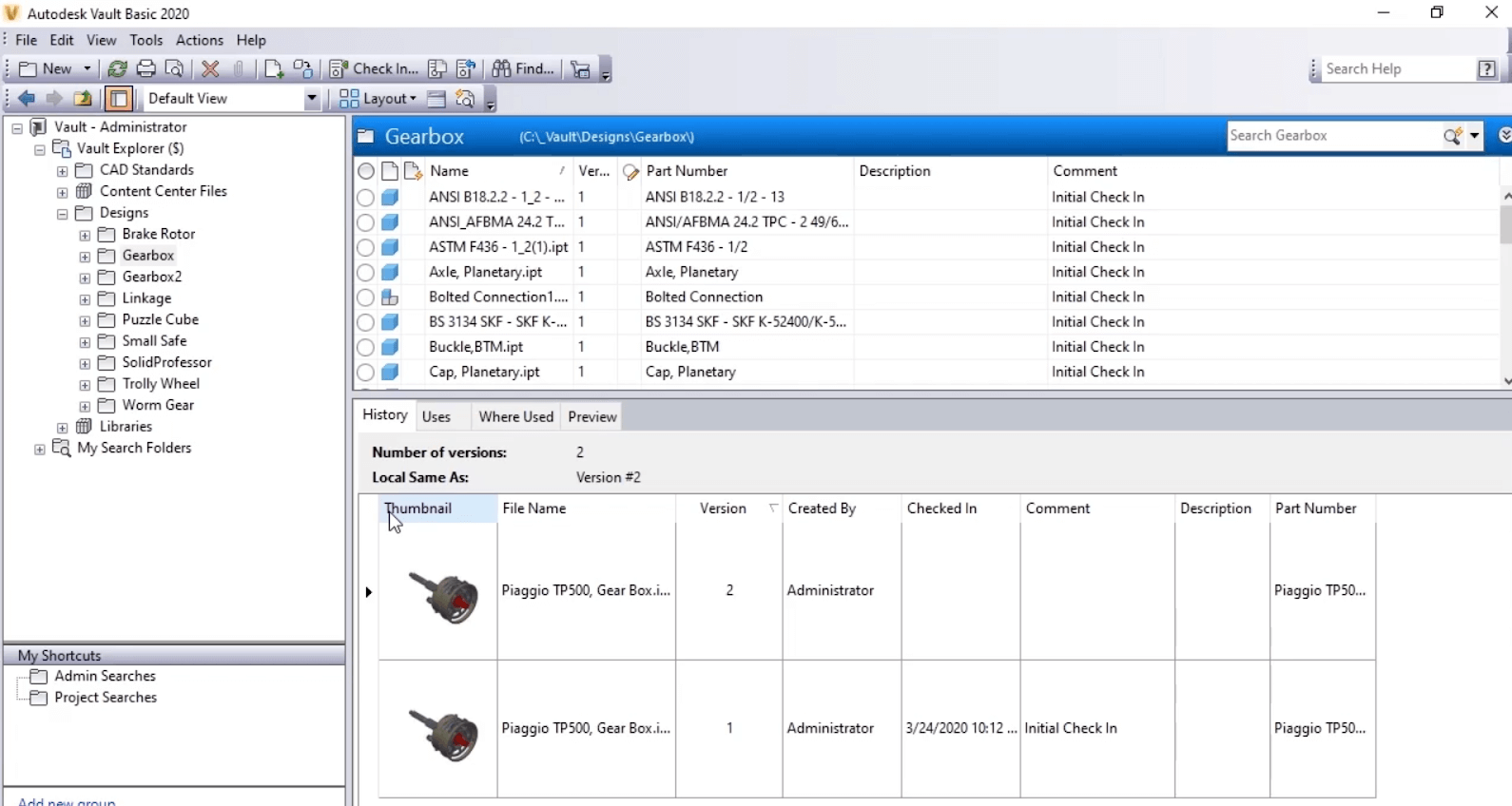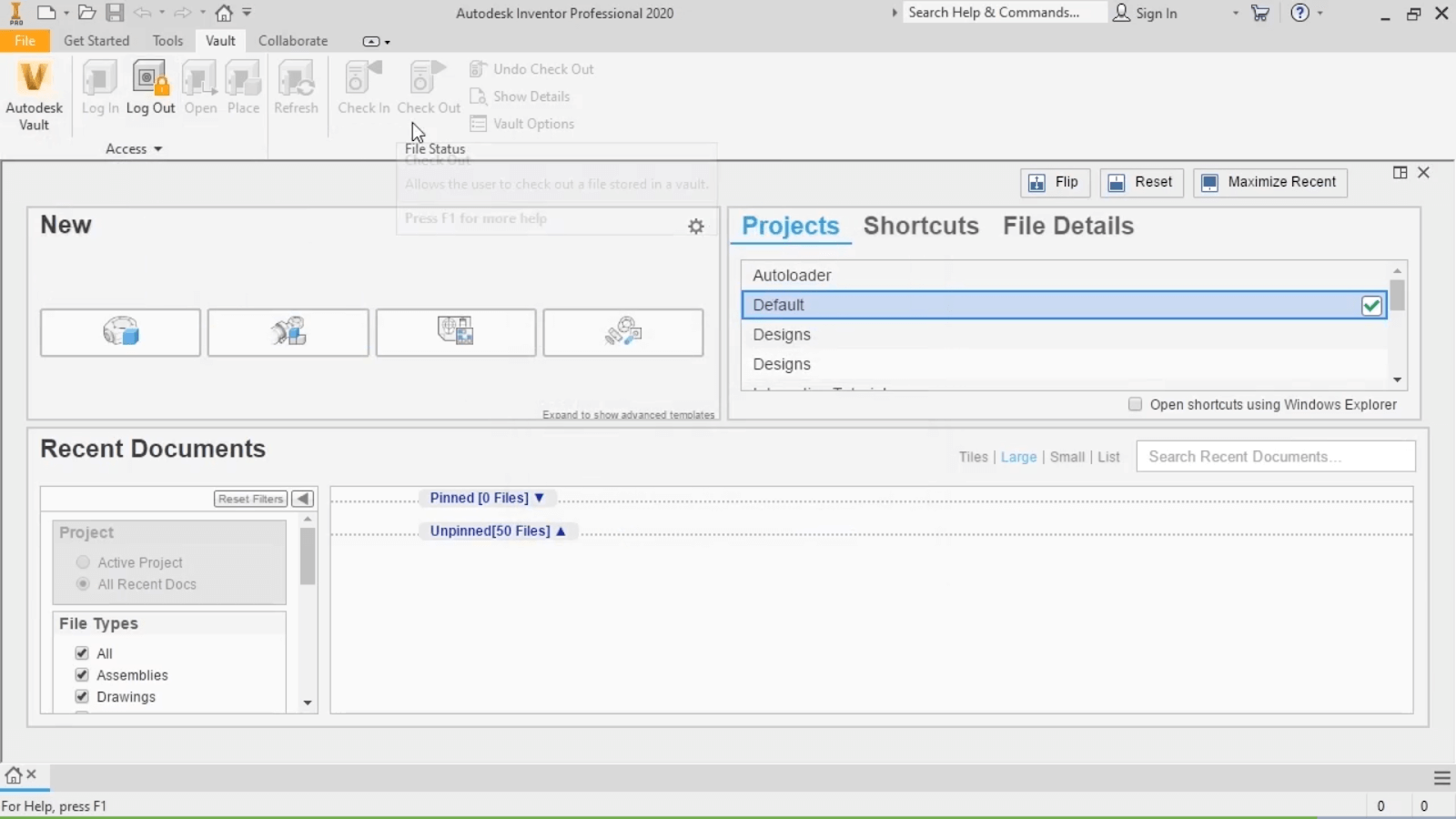Product data management is essential for large engineering teams. In this article, get a baseline understanding of Autodesk Vault and how it works.
Many large engineering design teams use product data management (PDM) software to provide centralized storage for all of their design data. PDM software is highly beneficial for multi-user environments because it allows teams to collaborate seamlessly on assemblies, subassemblies, and parts within a design.
There are many different engineering PDM software solutions available but most likely if your team uses Autodesk Inventor, then your PDM solution will be Autodesk Vault. These two programs complement each other really well; however, navigating PDM software takes some getting used to. To get started, it helps to gain a better understanding of how Autodesk Vault functions and integrates with your CAD software.
Engineering PDM software like Autodesk Vault serves as the single source of truth for CAD and non-CAD files. This allows everyone on the team to access the latest file versions and work together without fear of overwriting each other’s work. Autodesk Vault can also save past versions of files throughout the design process, which makes it easy to go back to a particular revision or specific assembly configurations if needed.
Autodesk Vault PDM has a major advantage over the traditional method of manually saving files in Windows File Explorer because Vault understands the relationships between your CAD files. This means that when you check an Autodesk Inventor assembly file into Vault, it understands all of the file relationships within that assembly. Plus, when you want to reuse components or subassemblies in other designs, you can look up where each one is used in Vault. If a component is used in multiple designs, you don’t have to worry about breaking file paths.
Get acquainted with Autodesk Vault as an end-user
Being confident with CAD software and PDM software requires different skills, but many engineering designers have to be comfortable with both to a certain degree. Gaining some basic understanding of the technology architecture behind Autodesk Vault will help you wrap your brain around how to use it and better understand how PDM software works in general.
At a high level, Autodesk Vault consists of a server-client interaction. The Autodesk Vault Server includes a database and a file store where the actual files are encrypted and kept. There’s also a web server that works on a server environment. This environment can be a corporate virtual machine (VM) , Microsoft Azure, or Amazon Cloud.

An overview of the server-client interaction in Autodesk Vault’s architecture
Autodesk Vault Client consists of client software running on individual CAD users’ local machines. The Vault Client includes add-ins for Autodesk software, Microsoft Office, and more. As a user, you’ll access this client program to browse, add, retrieve, and check-in/out files.
The client application interface looks similar to a web browser, which enables you to easily navigate to various projects and access the files you need. The program uses both the database and the file store to display information for all of your designs. If you select a file that has more than one version, you’ll see the version history and a preview of the prior versions. As a user, you can retrieve the most current file or any of the older versions.

Browsing different file versions in Autodesk Vault
All of these file versions are hosted on the server. As a user, you’ll work with files locally, but they’ll always be stored in Vault when you’re done working with them.
WATCH NOW: Learn more about Vault architecture in this free Autodesk Vault tutorial!
For Autodesk Vault administrators, many admin functions can be performed through the same client application, just with increased permissions. There’s also the Autodesk Data Management Server Console application that administrators can use to manage and maintain the vault on the server.
TIP: You’ll notice that SQL Express gets installed along with Autodesk Vault. When your database file size exceeds 10 gigabytes, you can no longer SQL Express and the vault will stop functioning. Typically, if you have 10 or more users, you should use full SQL with the Autodesk Data Management Console to avoid any downstream issues.
Autodesk Vault PDM add-ins make your life easier
When you install the Autodesk Vault client software on each user’s machine, add-ins are also installed for Autodesk and Microsoft Office software. These add-ins allow you to interact with the vault directly within the program you’re currently using, instead of having to open up the client program separately. For example, if you’re working in Autodesk Inventor and the add-in is installed, you’ll see an Autodesk Vault tab in the software. From here, you can launch the Autodesk Vault Client application, check files in or out of the vault, or open files stored in the vault directly in Inventor.

The Autodesk Vault add-in for Autodesk Inventor
With this fundamental knowledge of how Autodesk Vault PDM works, you should feel more confident getting started with the software and collaborating with your entire team.
























